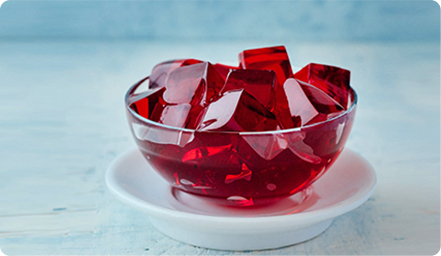-
July, 26,2025
Understanding the Role of Bloom Strength in Soft Gelatin Capsules
-
July, 25,2025
Bloom Strength and Its Impact on Hard Gelatin Capsules
-
July, 21,2025
How Gelatin Is Revolutionizing Pet Food: A Healthier Option for Dogs
-
June, 22,2025
Collagen as a Trusted Ingredient: Meeting Global Demand with Reliable Supply
Beef Gelatin in Candy: The Unexpected Ingredient
Did you know that over 60% of gummy candy products use beef gelatin in candy to achieve their chewy texture? In this article, we’ll uncover the role of beef gelatin in candy production, its many benefits, and how it stacks up against plant-based alternatives. Read on to learn why it’s a crucial ingredient in the candy-making process.
What is Beef Gelatin in Candy?
Beef gelatin is a flavorless, colorless substance derived from the collagen found in the skin, bones, and connective tissues of cows. It is commonly used in food products, particularly candy, to help create a firm, chewy, and smooth texture. Gelatin is produced by breaking down collagen through a process known as hydrolysis, and when added to liquids, it forms a gel-like consistency once cooled. This unique property is what makes beef gelatin an ideal ingredient in various types of candy, such as gummy bears, marshmallows, and fruit snacks.
Beef gelatin in candy serves primarily as a gelling agent, which allows candies to maintain their shape and consistency while providing a satisfying mouthfeel. In addition to its gelling ability, gelatin also helps candies maintain a smooth texture and can act as a stabilizer in certain formulations. While gelatin can be derived from a variety of sources, beef gelatin remains one of the most commonly used forms in the confectionery industry due to its superior gelling strength and cost-effectiveness.
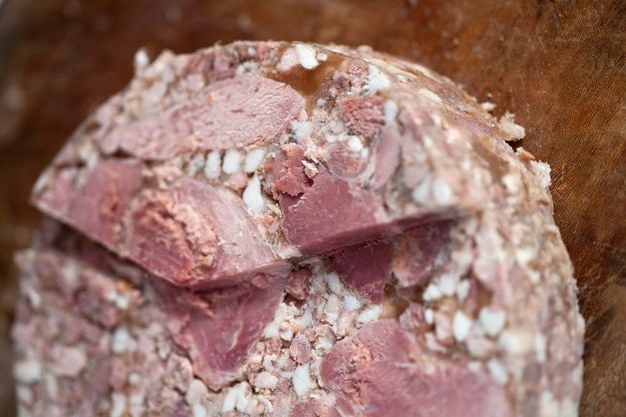
Candies That Typically Contain Beef Gelatin
Beef gelatin plays an essential role in many popular candy products. Its ability to provide the right texture and consistency is why it is so commonly used in candies that need to maintain their shape and have a chewy or jelly-like consistency. Let’s take a look at some of the candies that typically contain beef gelatin:
-
Gummy Candies: Gummy bears, gummy worms, and other chewy gummy candies are perhaps the most well-known candy products that contain beef gelatin. The gelatin gives these candies their signature chewiness, making them both enjoyable and fun to eat. The firm yet flexible texture of gummy candies is a direct result of the gelling properties of beef gelatin, making it an essential ingredient in their production.
-
Marshmallows: Marshmallows, both in their classic form and in variations like marshmallow crème or Peeps, rely heavily on beef gelatin to provide their soft and fluffy texture. The gelatin helps trap air inside the marshmallow, which creates its light, airy consistency. Without beef gelatin, marshmallows would be dense and unable to hold their shape, making it a crucial component in their manufacture.
-
Jelly Candies: Jelly-like candies, such as fruit jelly slices, jelly beans, and other similar confections, also use beef gelatin as a primary ingredient. Gelatin is used to create the smooth, chewy texture that makes these candies so satisfying to eat. Without beef gelatin, these candies would lack the firm texture needed to give them the proper "bite."
-
Nougat Candies: Certain nougat-based candies, especially those that require a chewy consistency, contain beef gelatin. The gelatin helps create the smooth, chewy texture that complements the other candy ingredients, such as sugar, nuts, and chocolate. Without beef gelatin, nougat candies would lack the signature texture that many consumers expect.
-
Fruit Snacks: Many fruit snacks and chewy fruit bars, which are marketed as healthier alternatives to candy, contain beef gelatin for its gelling properties. The gelatin helps these snacks retain their chewy, bite-sized shape while providing the desired texture that makes them enjoyable to eat.
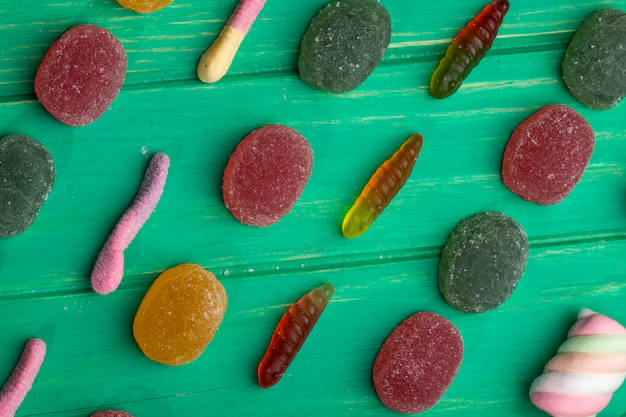
What is Beef Gelatin Used For?
Beyond its widespread use in candy, beef gelatin has several applications in the food industry, as well as in other sectors such as cosmetics and pharmaceuticals. Here’s a look at some of the common uses of beef gelatin:
-
Gelling Agent in Food Products: The primary function of beef gelatin is as a gelling agent. It’s used in a wide range of food products, from gummy candies and marshmallows to jellies, puddings, and yogurt. Its ability to form gels is invaluable in many recipes that require a firm texture or a smooth, consistent mouthfeel.
-
Thickening Agent: Beef gelatin is often used as a thickener in sauces, soups, and gravies. By adding gelatin to these products, manufacturers can achieve the desired thickness without altering the flavor.
-
Stabilizing Agent in Dairy Products: Gelatin is frequently used in dairy-based products such as ice cream, yogurt, and cheese to improve their texture and prevent separation. The gelatin helps stabilize the consistency and gives these products a smoother, creamier texture.
-
Cosmetic Industry: Beef gelatin is sometimes used in cosmetic products like face masks, moisturizers, and lotions. It can help improve the texture and stability of these products, giving them a smooth, appealing consistency.
-
Pharmaceutical Industry: In the pharmaceutical industry, gelatin is used to create capsules and tablets, ensuring they dissolve properly in the body. Beef gelatin is often used in these products due to its ease of use and availability.
At Funingpu, we provide food-grade beef gelatin that is used across the food industry, especially in candy production. Our gelatin is perfect for achieving the desired texture in gummies, marshmallows, and other chewy treats.
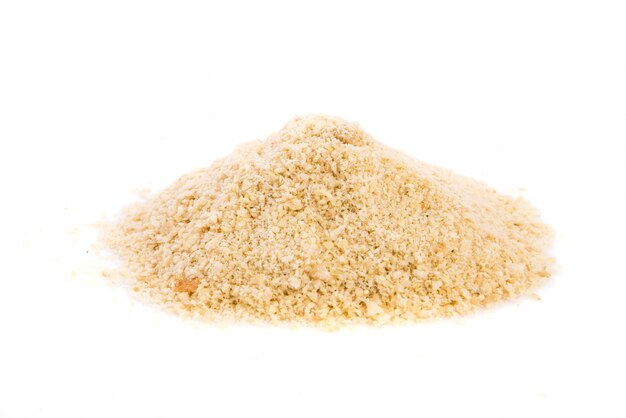
Beef Gelatin Benefits in Candy
Beef gelatin provides several important benefits when used in candy-making, helping to create the perfect texture, appearance, and shelf stability. Below are some of the key beef gelatin benefits in candy production:
-
Chewy Texture: One of the main benefits of beef gelatin in candy is its ability to create a chewy texture. Candies like gummy bears, marshmallows, and fruit jellies rely on beef gelatin to provide the signature texture that makes them fun to eat.
-
Firmness and Stability: Beef gelatin ensures that candies hold their shape and maintain their firmness, even when exposed to heat or humidity. This stability is especially important for candies that need to remain intact during shipping and storage.
-
Smooth Texture: The inclusion of beef gelatin in candy formulations also contributes to a smooth, non-grainy texture. This smoothness is essential for many candy products, particularly marshmallows and jelly-based candies, which need to feel smooth and pleasant in the mouth.
-
Shelf Life: Beef gelatin helps extend the shelf life of candies by acting as a stabilizer. It prevents candies from becoming overly sticky or losing their shape over time, allowing them to remain fresh for longer periods.
-
Cost-Effective: Compared to other gelling agents, such as agar-agar or pectin, beef gelatin is generally more affordable. This cost-effectiveness makes it a popular choice for manufacturers who need to produce large quantities of candy at an affordable price.
-
Nutritional Benefits: While not often considered, beef gelatin has nutritional benefits, especially when derived from high-quality sources. Beef gelatin is rich in collagen, which is beneficial for skin health, joint support, and overall vitality. Some manufacturers even promote these health benefits by marketing their candy as containing collagen or other protein-rich ingredients.
Thanks to Funingpu’s food-grade bovine hide gelatin, manufacturers can ensure their candies achieve the perfect chewy texture and stability. Our gelatin helps produce candies that last longer while maintaining that satisfying mouthfeel consumers love.
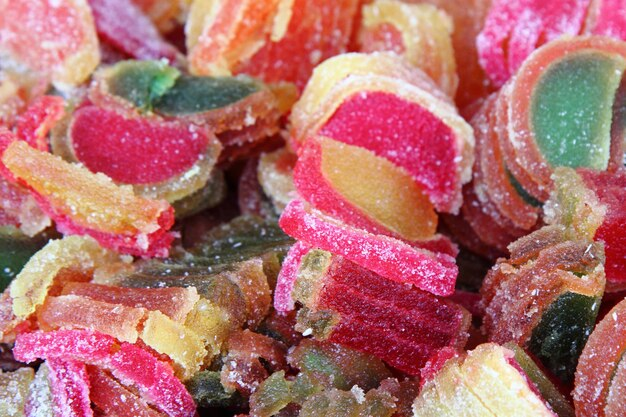
Beef Gelatin vs. Plant-Based Gelatin in Candy
In recent years, plant-based alternatives to beef gelatin have gained popularity, particularly among vegan, vegetarian, and health-conscious consumers. But how does beef gelatin compare to these alternatives? Let’s break down the key differences:
| Aspect | Beef Gelatin | Plant-Based Gelatin |
| Source | Derived from animal collagen (bovine hide, pork skin, etc.) | Sourced from plants (agar-agar, pectin, etc.) |
| Gelling Strength | Strong gelling ability, ideal for chewy texture | Weaker gelling ability, tends to be firmer and more brittle |
| Texture | Smooth, chewy, and flexible texture | Can be firm and jelly-like, sometimes grainy |
| Transparency | Creates clear, transparent candy | Can appear cloudy or opaque |
| Shelf Life | Longer shelf life and stability | May have a shorter shelf life compared to beef gelatin |
| Cost | Generally more affordable | Usually more expensive, especially if organic or non-GMO |
| Consumer Preferences | Preferred by traditional candy makers, but not suitable for vegans or those avoiding animal products | Popular with vegans, vegetarians, and those avoiding animal products |
While beef gelatin provides a strong, smooth, and chewy texture, ideal for traditional candy-making, plant-based gelatin offers a vegan-friendly alternative with a firmer texture and often a shorter shelf life. Both types have their advantages depending on the specific needs of candy manufacturers, consumer preferences, and cost considerations.
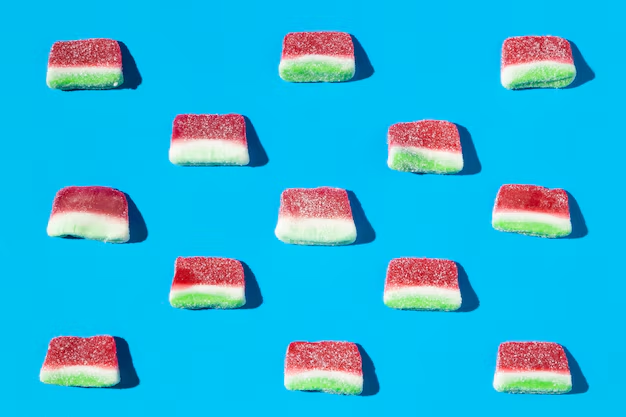
Final Thoughts
Beef gelatin in candy has been a staple ingredient in the confectionery industry for decades. Its ability to create a chewy, firm, and smooth texture makes it indispensable in many candy products, including gummies, marshmallows, and jelly candies. Despite the growing popularity of plant-based alternatives, beef gelatin remains a preferred choice for many candy manufacturers due to its effectiveness, cost-efficiency, and versatile properties.
While the debate between beef gelatin and plant-based gelatin continues, it’s important to recognize the unique benefits that beef gelatin offers in candy production. Whether you're a candy manufacturer or a consumer, understanding the role of beef gelatin and its benefits can help you make more informed decisions when choosing or creating candy products.
If you're looking for high-quality, food-grade gelatin for your candy-making needs, Funingpu is here to help. We specialize in providing premium bovine hide gelatin and pork gelatin, ensuring consistency and exceptional texture for all your confectionery products. Contact Funingpu today to learn more about how our gelatin can elevate your candy production!
FAQs
1. What candy has beef gelatin?
Many popular candies, including gummy bears, marshmallows, jelly beans, fruit snacks, and nougat-based candies, typically contain beef gelatin as a gelling agent.
2. Is beef gelatin used in all gummy candies?
While beef gelatin is commonly used in gummy candies, some brands offer plant-based alternatives for vegans or vegetarians, such as those made with agar-agar or pectin.
3. What is the difference between beef gelatin and plant-based gelatin?
Beef gelatin is derived from animal collagen, providing a strong gelling ability and chewy texture, while plant-based gelatin alternatives like agar-agar and pectin come from plant sources and tend to produce a firmer texture.
4. Is beef gelatin healthy in candy?
Beef gelatin is a source of collagen, which can have benefits for skin, joints, and overall health. However, the quantity of collagen in candy is relatively small, so it should not be relied upon as a significant source of nutrition.
5. Are there edible gelatin manufacturers that offer beef gelatin for candy?
Yes, there are numerous gelatin manufacturers and edible gelatin manufacturers that produce beef gelatin specifically for use in the food and candy industries. Funingpu is a trusted gelatin manufacturer providing premium food-grade bovine hide gelatin for the confectionery industry. Our gelatin ensures the perfect texture in every candy product.
Phone: +86-577-88105990
Mobile: +86-138 5886 1938
Official Website: www.fnp-gelatin.com
Email: sales@funingpu.com
Address: No. 1-10 Wenpu Road, Yacheng Town, Xiapu County, Ningde City, Fujian Province

